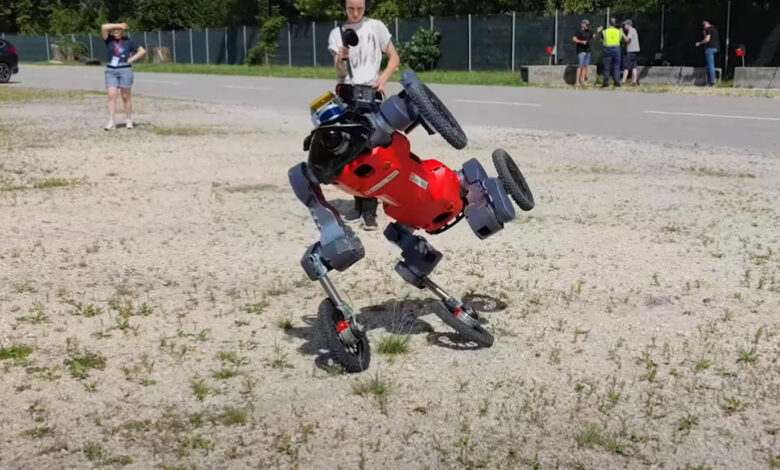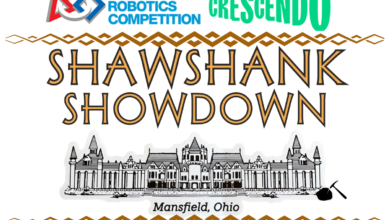Hybrid humanoid robot dog takes on steps, streets, sidewalks independently

ETH Zurich’s Robotic Systems Lab has recently taken its revolutionary legged-wheeled hybrid road out and about to test its mobility. Tested on the streets of Zurich and Seville, the robot could navigate a wide variety of terrains while also autonomously avoiding collisions with obstacles and pedestrians.
Designed as a proposed “last mile” delivery robot, the robot combines the best of both legged and wheeled variants of robots. This combination, the researchers behind have found, is an excellent solution to challenges faced by either pure-legged or pure-wheeled robots.
The new hybrid robot utilizes reinforcement learning techniques to maneuver through different environments. These techniques enable the robot to seamlessly switch between driving and walking modes and adjust to diverse terrains.
“The main objective of the project was to build a large-scale autonomous driving system for such a ground robot, with the fastest speed ever,” Joonho Lee, co-author of the paper, told Tech Xplore. “This is an outcome of more than five years of research in legged robotics, autonomous navigation, and robot perception,” he added.
Legged-wheeled robots are the way to go
The new robot builds on work from previous robots created by team CERBERUS. This includes researchers at indoor drone company Flyability. It won the DARPA Subterranean Challenge in 2021.
“Traditionally, navigation planning for ground robots has been done using online optimization methods,” Lee explained.
He further added, “Such approaches work fine for simple wheeled robots or slow-walking robots, but in the case of fast-moving robots like ours (which can drive up to 20 km/h) they cannot provide fast enough navigation plans. For robots moving at 2 m/s, 0.5 seconds of delay can result in a 1 m error, which can lead to a catastrophic collision.”
In order to enable their robot to navigate environments on its own, the researchers created, trained, and tested different hierarchical reinforcement learning methods. In the end, they trained a controller based on a neural network that can handle various inputs and generate new navigation plans for the robot in a matter of milliseconds.
“Another big advantage of our approach is that our neural net controller fully understands the nonlinear and complex dynamics of legged robots,” Lee said. “As it understands how the robot behaves on various terrains at different speeds, it can navigate the robot very efficiently.”
When navigating relatively flat terrain, the robot drives forward using its wheels while minimizing power consumption. In more difficult terrains with obstacles like steps where using wheels would be difficult or impossible, the robot can switch to walking mode.
Tested on the streets of Zurich and Seville
Lee and his colleagues tested their navigation system in a series of experiments performed in real-world environments. They found that it was very responsive and high-performing. This allowed their robot to successfully travel over 6.2 miles (10 km) across two different European cities: Zurich and Seville.
“Wheeled robots are efficient but cannot traverse high obstacles,” Lee said. “On the other hand, legged robots are very good at overcoming obstacles and steep slopes, but their efficiency is very low because they have to drive more than 10 joints in an irregular pattern,” he added.
“Usually, walking robots can only operate for up to 1 hour. With the wheeled legs, our robot can overcome the same obstacles as normal walking robots with at least 3 times longer operation,” he said.
The wheeled-legged robot and navigation system could be further enhanced and utilized in various environments in the future. One of its most promising applications will be the rapid, reliable, and autonomous delivery of goods across different terrains.
You can read about the robot in more detail in the journal Science Robotics.
ABOUT THE EDITOR
Christopher McFadden Christopher graduated from Cardiff University in 2004 with a Masters Degree in Geology. Since then, he has worked exclusively within the Built Environment, Occupational Health and Safety and Environmental Consultancy industries. He is a qualified and accredited Energy Consultant, Green Deal Assessor and Practitioner member of IEMA. Chris’s main interests range from Science and Engineering, Military and Ancient History to Politics and Philosophy.



